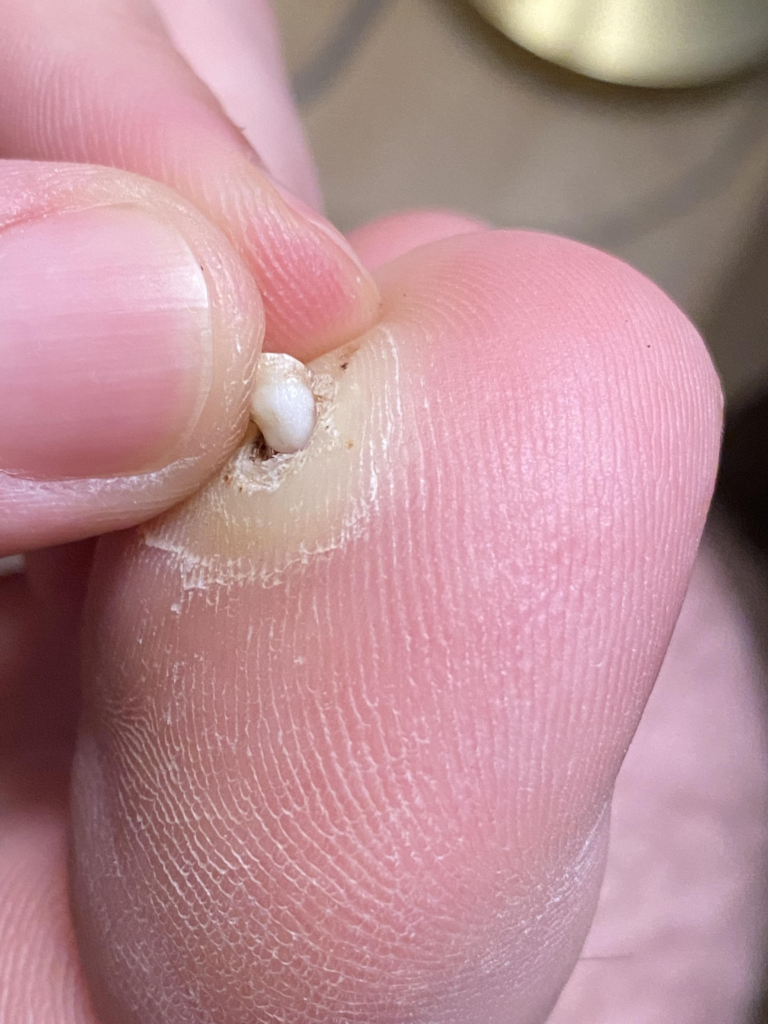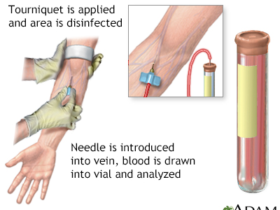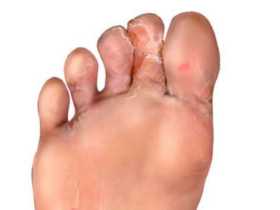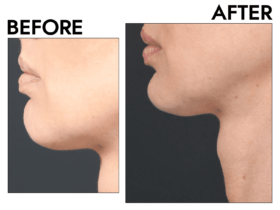Verrucas, or plantar warts, is a common skin condition caused by the human papillomavirus (HPV). They can be particularly troublesome when they appear on the soles of the feet, leading to discomfort and pain. As these warts undergo treatment, they begin to die, often leaving behind a “dying verruca hole.” Understanding this process, including the causes, diagnosis, and treatment options, is crucial for effective management and recovery.

Understanding Verrucas and Their Lifecycle
What Are Verrucas?
Verrucas are warts that develop on the soles of the feet due to infection with specific strains of HPV. These warts are typically flat due to the pressure exerted while walking. They can appear singly or in clusters and often have a rough surface with tiny black dots, which are small blood vessels.
The Lifecycle of a Verruca
The lifecycle of a verruca can be divided into several stages: initial infection, growth, and eventual resolution. Initially, the HPV virus enters the skin through tiny cuts or abrasions. The virus then takes hold in the skin’s outer layer, causing cells to proliferate and form a wart. Over time, the body’s immune system may begin recognizing and fighting the virus, leading to the wart’s gradual regression and death. This regression phase is marked by changes in the wart’s appearance and the formation of what is known as a “dying verruca hole.”
Causes of Dying Verruca Holes
Natural Immune Response
One of the primary causes of dying verruca holes is the body’s natural immune response. As the immune system begins to target the HPV-infected cells, the verruca shrinks and dies. This immune response can take several months or even years to develop, but it is a critical component of the wart’s natural resolution.

Treatment Interventions
Various treatments can accelerate the death of a verruca, leading to the formation of dying verruca holes. Common treatments include topical salicylic acid, cryotherapy, and laser therapy. These treatments damage the wart tissue, prompting the immune system to clear the infected cells. As the wart tissue dies and sloughs off, it leaves a crater-like hole in the skin.
Mechanical Damage
Mechanical damage, such as excessive rubbing or scraping, can also contribute to the formation of dying verruca holes. This damage can disrupt the wart’s structure, causing parts of it to die and fall away. While this can help resolve the wart, it can also lead to irritation and potential secondary infections if not managed properly.
Diagnosing Dying Verruca Holes
Visual Inspection
Diagnosing a dying verruca hole primarily involves a visual inspection. A healthcare provider will look for signs that the wart is regressing, such as a decrease in size, a change in color, and the formation of a central depression or hole. These features suggest that the wart is dying and the body is successfully fighting off the infection.
Dermatoscopy
Dermatoscopy—a noninvasive diagnostic tool that provides a magnified view of the skin—may be used in some cases. This tool allows for a closer examination of the verruca’s structure and helps differentiate it from other skin lesions. Dermatoscopy can provide detailed images that reveal the dying process, such as the breakdown of the wart’s core and the formation of a dying verruca hole.
Biopsy
In rare cases, a biopsy may be performed to confirm the diagnosis. This involves taking a small sample of the wart tissue and examining it under a microscope. A biopsy can help rule out other conditions that might mimic a dying verruca, such as skin cancer or other types of warts.

Treatment Options for Dying Verruca Holes
Salicylic Acid
Salicylic acid is one of the most commonly used treatments for verrucas. It works by exfoliating the infected skin cells and promoting the death of the wart tissue. Salicylic acid can help create a dying verruca hole by breaking down the wart’s structure when applied consistently. It is available over-the-counter in various forms, such as gels, liquids, and patches.
Cryotherapy
Cryotherapy involves freezing the wart with liquid nitrogen, causing the infected tissue to die and fall off. This treatment can lead to the formation of a dying verruca hole as the wart tissue is destroyed. A healthcare provider typically performs cryotherapy and may require multiple sessions to achieve complete resolution.
Laser Therapy
Laser therapy uses focused light to target and destroy the blood vessels feeding the wart. This treatment causes the wart tissue to die, leading to the formation of a dying verruca hole. Laser therapy is usually reserved for stubborn or recurrent verrucas that have not responded to other treatments.
Cantharidin
Cantharidin is a chemical derived from the blister beetle and is used to treat verrucas by causing the skin to blister. The blistering process helps lift the wart off the skin, creating a dying verruca hole as the wart dies and detaches. A healthcare provider typically applies this treatment, which is effective for children and adults.
Immune Response Modifiers
In some cases, medications that modulate the immune response may be used to treat verrucas. These medications, such as imiquimod, enhance the body’s ability to fight off the HPV virus, promoting the death of the wart. As the immune system attacks the infected cells, a dying verruca hole may form as the wart regresses.
Managing and Preventing Complications
Caring for a Dying Verruca Hole
Proper care of a dying verruca hole is essential to prevent complications such as infection. Keeping the area clean and dry is crucial. Using an antiseptic solution can help reduce the risk of bacterial infection. Covering the hole with a sterile bandage can also protect it from dirt and debris.
Monitoring for Infection
It’s essential to monitor a dying verruca hole for signs of infection, such as increased redness, swelling, pain, or discharge. If any of these symptoms occur, seeking medical advice promptly is essential to prevent further complications. An infected verruca hole may require antibiotic treatment to clear the infection.
Preventing Recurrence
Preventing the recurrence of verrucas involves taking steps to reduce the risk of HPV infection. Wearing protective footwear in communal areas such as swimming pools and locker rooms can help prevent the virus from entering the skin. Keeping feet clean and dry and avoiding sharing personal items such as towels and shoes can also reduce the risk of reinfection.

Conclusion
The process of a verruca dying and the subsequent formation of a dying verruca hole can be an important indicator of successful treatment and immune response. Understanding the causes, diagnosis, and treatment options for dying verruca holes can aid in effective management and recovery. By employing appropriate treatments and taking preventative measures, individuals can reduce the discomfort and potential complications associated with verrucas, ultimately leading to healthier and more comfortable feet.

















Got a Questions?
Find us on Socials or Contact us and we’ll get back to you as soon as possible.